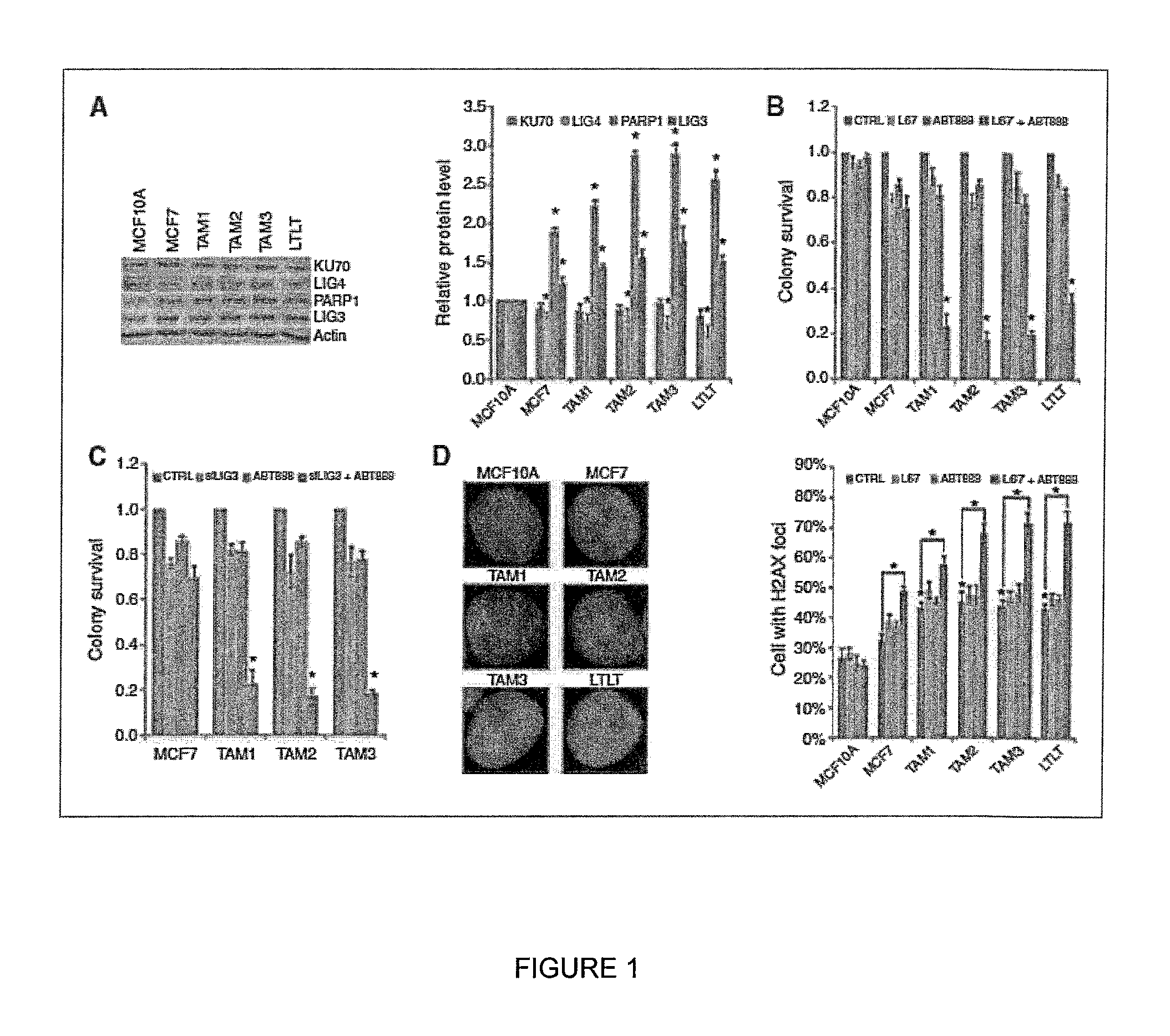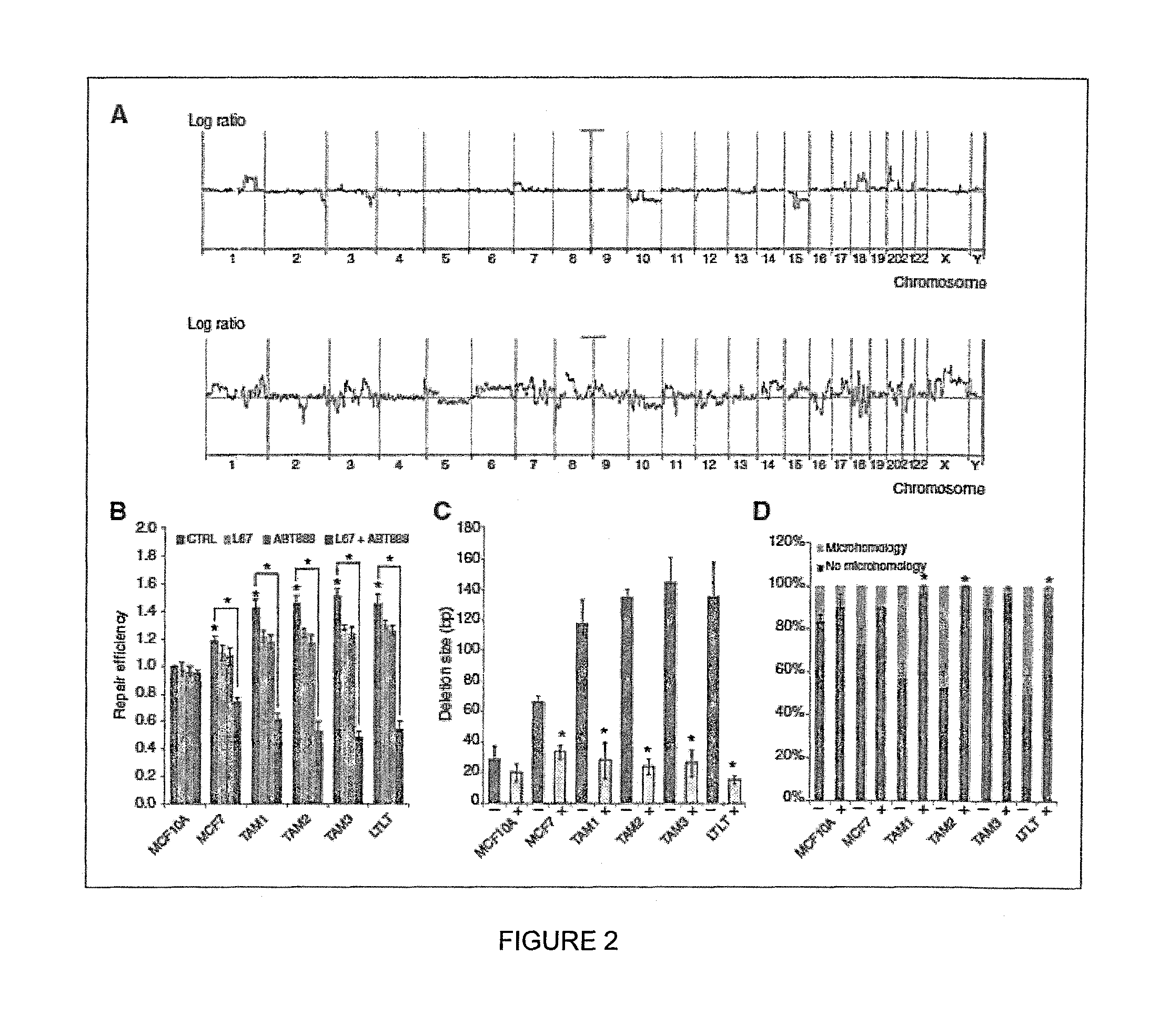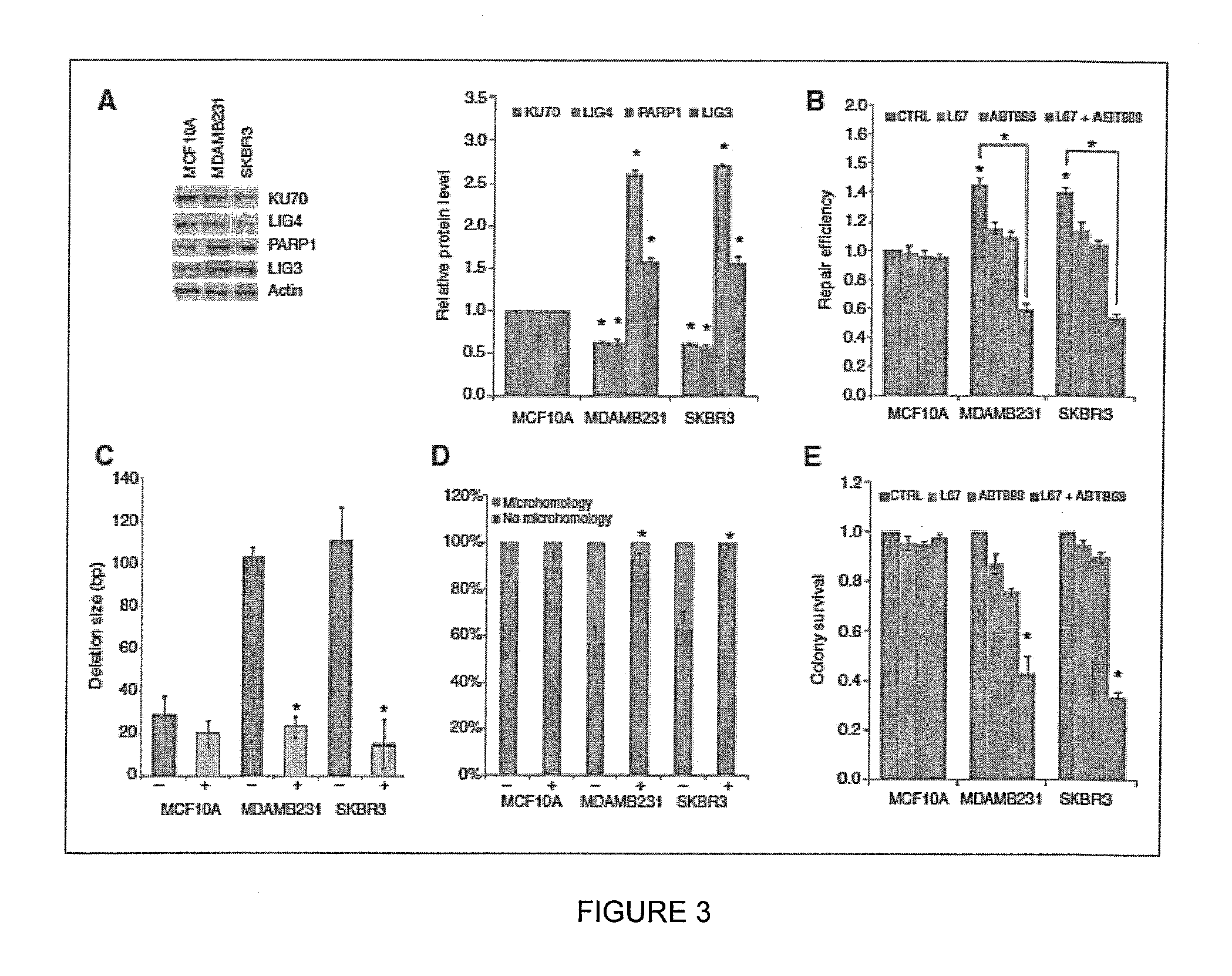Targeting abnormal DNA repair in therapy-resistant breast and pancreatic cancers
a technology for dna repair and breast cancer, applied in the direction of nucleotide libraries, instruments, ict adaptation, etc., can solve the problem of inevitable resistance to both endocrine therapies, and achieve the effect of reducing the steady-state level of dna ligas
- Summary
- Abstract
- Description
- Claims
- Application Information
AI Technical Summary
Benefits of technology
Problems solved by technology
Method used
Image
Examples
example 1
Altered Expression of DNA Repair Proteins in Breast Cancer Cell Lines with Acquired Resistance to Anti-Estrogen Therapeutics
[0148]Although DSB repair defects in inherited breast cancers caused by mutations in either BRCA1 or BRCA2 have been extensively studied, DNA repair abnormalities in sporadic breast cancers are less well defined (4, 5). It was shown previously that the ER / PR+MCF7 cell line established from a sporadic breast cancer had a lower steady-state level of DNA ligase IV, a component of the major DNA-PK-dependent NHEJ pathway, and a higher steady-state level of DNA ligase IIIα, a component of ALT NHEJ, than the non-tumorigenic MCF10A cell line established from normal breast epithelium (10). Here, we find that MCF7 also has increased levels of PARP1, another component of ALT NHEJ, compared with MCF10A (FIG. 1A). Tamoxifen (TAM1, TAM2, and TAM3) and LTLT-resistant derivatives of MCF7 also exhibit significantly increased steady-state levels of the ALT NHEJ proteins PARP1 an...
example 2
Hormone Therapy-Resistant Breast Cancer Cell Lines are More Dependent on the ALT NHEJ Pathway for the Repair of DSBs
[0153]Because both PARP1 and DNA ligase IIIα participate in the repair of DNA SSB (11, 15, 21), we predicted that the combination of repair inhibitors would lead to an accumulation of DSBs, most likely as a consequence of inhibition of SSB repair as described by others (6, 8). Interestingly, prior to treatment, the therapy-resistant derivatives of MCF7 cells had significantly higher percentage of cells with spontaneous gH2AX foci, an established marker for DSBs (22), than parental MCF7 cells and nontumorigenic MCF10A cells (FIG. 1D) but there were no differences between the cell lines in the levels of DNA SSBs, as measured by XRCC1 foci (data not shown; ref. 23). To determine whether elevated levels of ROS may contribute to the elevated levels of DSB, we measured the levels of ROS (24) but found no differences between the cell lines (data not shown). Treatment with the...
example 3
ER / PR− Breast Cancer Cell Lines have Increased Expression of DNA Ligase IIIα and PARP1 and are Hypersensitive to Inhibition of ALT NHEJ
[0157]Because breast cancer cell lines with acquired resistance to anti-estrogen therapeutics have abnormalities in the repair of DSBs by NHEJ, we examined the steady-state levels of NHEJ proteins in the intrinsically resistant, ER / PR− breast cancer cell lines, MDA-MB-231 and SK-BR-3. As was observed in the breast cancer cell lines with acquired resistance to anti-estrogen therapeutics, the steady-state levels of the ALT NHEJ proteins DNA ligase IIIα and PARP1 were significantly increased, whereas the steady-state levels of the DNA-PK-dependent NHEJ proteins, Ku70 and DNA ligase IV, were significantly decreased in both the ER / PR-cell lines, relative to nontumorigenic MCF10A cells (FIG. 3A). Similar to the breast cancer cell lines with acquired resistance to anti-estrogen therapies, the ER / PR-cell lines have elevated levels of endogenous DSBs (FIG. 7A...
PUM
| Property | Measurement | Unit |
|---|---|---|
| Electrical resistance | aaaaa | aaaaa |
| Density | aaaaa | aaaaa |
| Responsivity | aaaaa | aaaaa |
Abstract
Description
Claims
Application Information
 Login to View More
Login to View More - R&D
- Intellectual Property
- Life Sciences
- Materials
- Tech Scout
- Unparalleled Data Quality
- Higher Quality Content
- 60% Fewer Hallucinations
Browse by: Latest US Patents, China's latest patents, Technical Efficacy Thesaurus, Application Domain, Technology Topic, Popular Technical Reports.
© 2025 PatSnap. All rights reserved.Legal|Privacy policy|Modern Slavery Act Transparency Statement|Sitemap|About US| Contact US: help@patsnap.com



